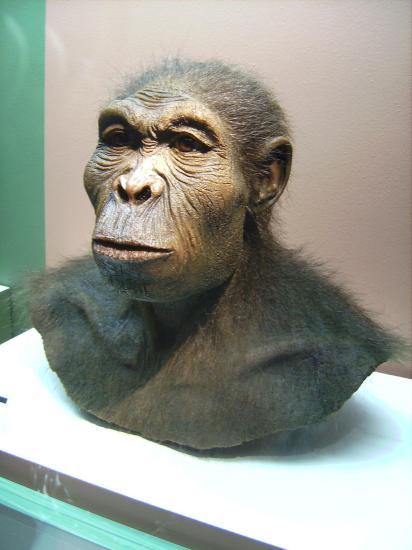University of Pittsburgh
Source - http://www.news.pitt.edu/news/measure-mankind
 Homo habilis - Wikipedia
Homo habilis - Wikipedia
Pitt professor Jeffrey Schwartz argues in Science that there’s more to Homo than we may think
Among the many things that science is, it is a system of categorization. The human fossil record—file under genus, Homo; species, sapiens—is rather poorly categorized, contends the University of Pittsburgh’s Jeffrey Schwartz, leading to a narrow view of what he believes to be a more complex and expansive evolutionary history than most anthropologists recognize.
In the Aug. 28 issue of the renowned journal Science, Schwartz, professor of anthropology and the history and philosophy of science, argues that, “the boundaries of both the species and the genus remain as fuzzy as ever, new fossils having been haphazardly assigned to species of Homo, with minimal attention to morphology.”
By this, Schwartz means that the form and structure of hominid (a group consisting of modern humans, extinct human species, and all our immediate ancestors) fossils are too often ignored in deference to tradition over objectivity.
As an example, Schwartz cites Jonathan and Mary Leakey’s 1960 discovery of 1.8-million-year-old fossils in Tanzania’s Olduvai Gorge. When the pair published their findings in 1964, they claimed the fossils represented a new species, Homo habilis.
“There was scant morphological justification for including any of this very ancient material in Homo,” Schwartz writes. “Indeed, the main motivation appears to have been the Leakeys’ desire to identify this hominid as the maker of the simple stone tools found in the lower layers of the gorge …”
According to Schwartz, including these fossils in Homo, when their age and appearance dictates otherwise, “so broadened the morphology of the genus
that other hominids from other sites could be shoehorned into it almost without regard to their physical appearance. As a result, the largely unexamined definition of Homobecame even murkier.”
To ultimately understand what is Homo and what is not, Schwartz contends, anthropologists must approach their science in a more systematic fashion in order to truly understand the evolutionary past that led to the human of today.
“If we want to be objective, we shall almost certainly have to scrap the iconic list of (genus and species) names in which hominid fossil specimens have historically been trapped and start from the beginning,” he says.